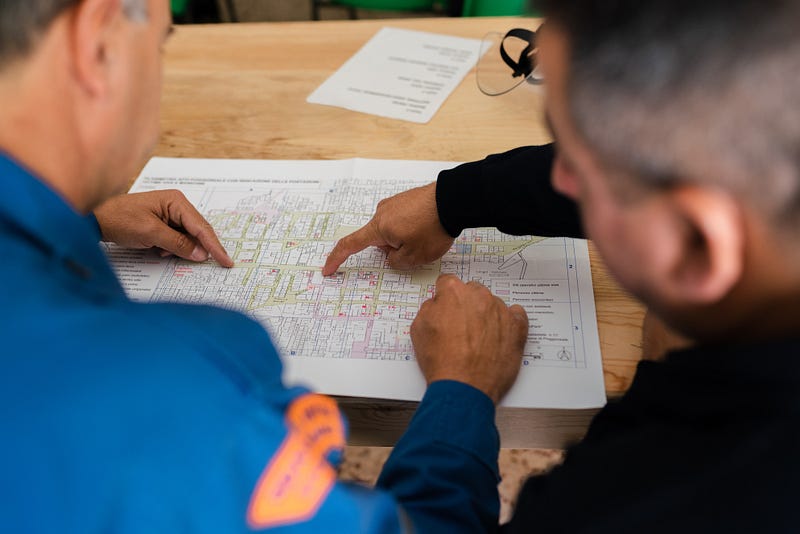Transforming Workplace Efficiency: Lessons from a Smart Friend
Written on
Chapter 1: Identifying the Core Issues
Recently, I've developed a keen interest in coding and how Machine Learning and Automation can take over our repetitive tasks in the workplace. This shift not only streamlines our work but also enhances our quality of life.
Gone are the times when we had to painstakingly make manual alterations to our documents, thanks to the powerful formulae embedded in Excel. But how do you start to automate processes within your organization?
To illustrate this, let me share a personal story about a close friend of mine, whom I’ll refer to as my "smart friend." We all have that one friend who seems to have all the answers.
A few days ago, my smart friend and I were chatting about integrating coding to improve our work environment. As someone who is still learning about coding, I felt somewhat lost but fascinated while he explained the various inefficiencies in our workplace.
His brilliance left me in awe. After he finished his insightful commentary, I casually asked if he could teach me to code. To my surprise, he quickly declined. I had expected that response; after all, nothing comes free in this world.
Before he spoke, I had tried to justify my lack of input in our discussion by listing reasons why I couldn’t contribute ideas for automation. I cited my unfamiliarity with coding as the primary obstacle.
However, what he said next was truly eye-opening. He explained that my ignorance of coding wasn't the barrier to optimizing our systems. One doesn't necessarily need to be an expert to identify what needs improvement; just having experience with the systems can highlight areas for automation.
“You don’t learn things to start thinking of solutions. You find out problems first, then start learning things to resolve the issue.” — My smart friend
This statement felt like something out of an inspiring TED talk, and he even humorously suggested he could be a teacher. It was a moment of clarity for me, where everything suddenly made sense. I realized my approach to optimization needed a serious rethink.
How do you feel about this perspective? Did it change your approach to problem-solving? It certainly changed mine, and I hope it resonates with you too.

Chapter 2: Embracing First Principle Thinking
What my smart friend articulated made a great deal of sense. It aligns with the concept of "First Principle Thinking," a method famously used by Elon Musk when tackling challenges.
This engineering mindset, characterized by a mechanical, systematic, and pragmatic approach, is exactly what helps one see problems clearly. In contrast, my previous method of thinking was somewhat unfocused, merely involving rote learning.
For instance, if you were Elon Musk aiming to reduce the costs associated with producing battery packs for electric vehicles, your approach would significantly affect the outcome.
Using First Principle Thinking, you might pose questions like: "What materials make up the batteries? What are their market values?" You'd break down the components—cobalt, nickel, aluminum, carbon, and polymers—and analyze their costs on a materials basis. This could lead to innovative ways to lower production costs, as Musk himself highlighted in an interview.
In my initial approach, I would have focused first on learning the intricacies of battery production before considering how to optimize costs. However, this method is flawed; it often leads to accumulating unnecessary knowledge without addressing the specific problem at hand.

Chapter 3: Finding Your Personal Approach to Problem-Solving
There are numerous learning methods out there, and what works for one individual might not work for another. The goal of this article isn't to elevate First Principle Thinking as the ultimate method of critical analysis.
Instead, I encourage you to recognize and address any weaknesses in your problem-solving techniques. Discover a way of tackling issues that suits you best, rather than conforming to what society deems ideal.
With the rapid advancements in technology, as highlighted by Moore’s Law—where the number of transistors on a microchip doubles every two years while costs decrease—it’s crucial to evolve our approach to problem-solving.
The ability to think critically and solve problems will soon become one of the most valuable assets in our society. Not our inflated currencies or cryptocurrencies, but the raw, creative potential of innovative minds will drive the transformation of our world.
It's now or never. Equip yourself with the right skills or risk being left behind.
I hope you found this article enlightening! Please feel free to leave a comment; I’m eager to hear your thoughts on this topic!
This video offers five essential tips for helping teams adapt to change in the workplace, emphasizing the importance of flexibility and innovation.
In this video, explore how people analytics can revolutionize or disrupt your workplace, shedding light on the transformative power of data-driven decision-making.